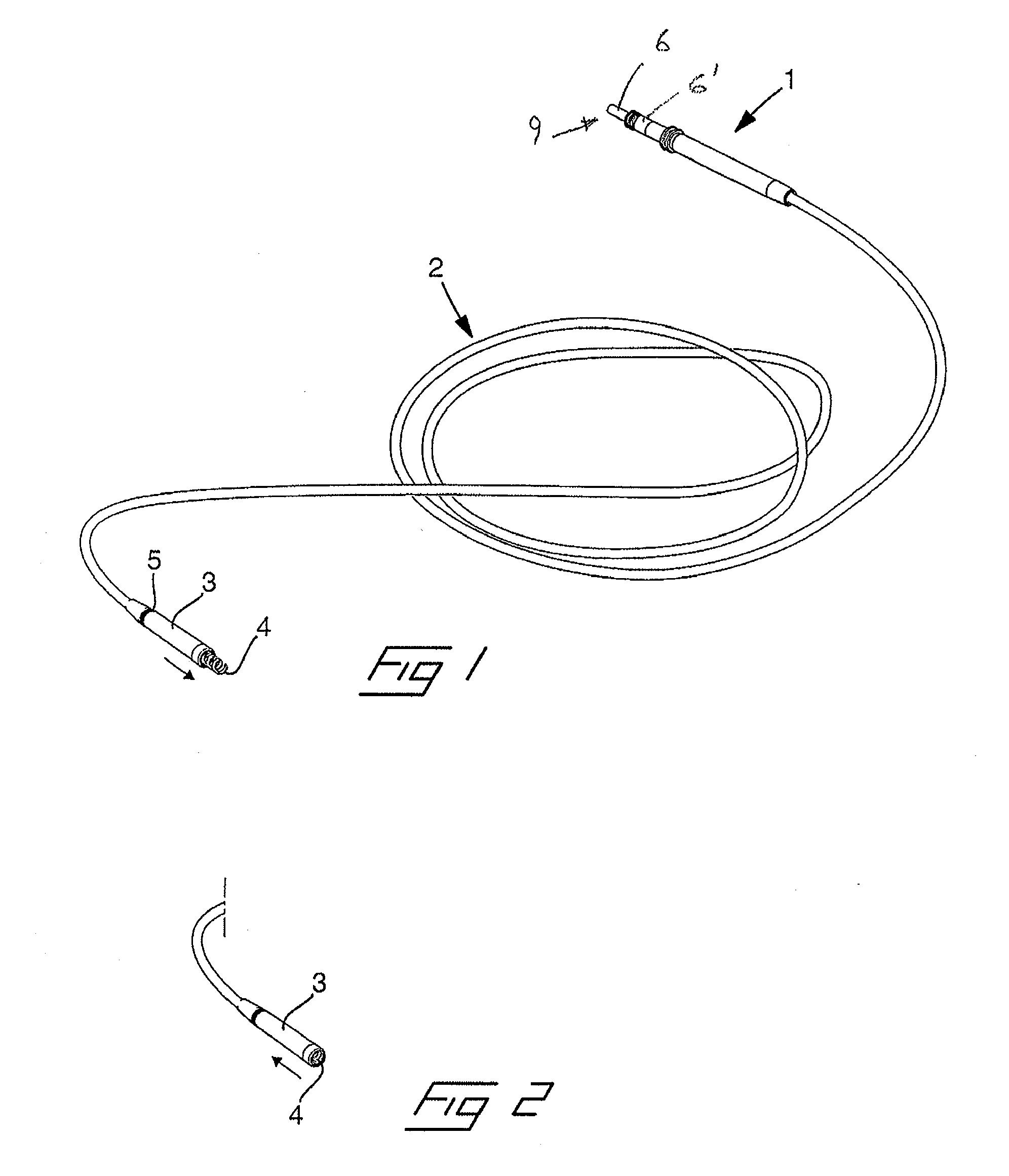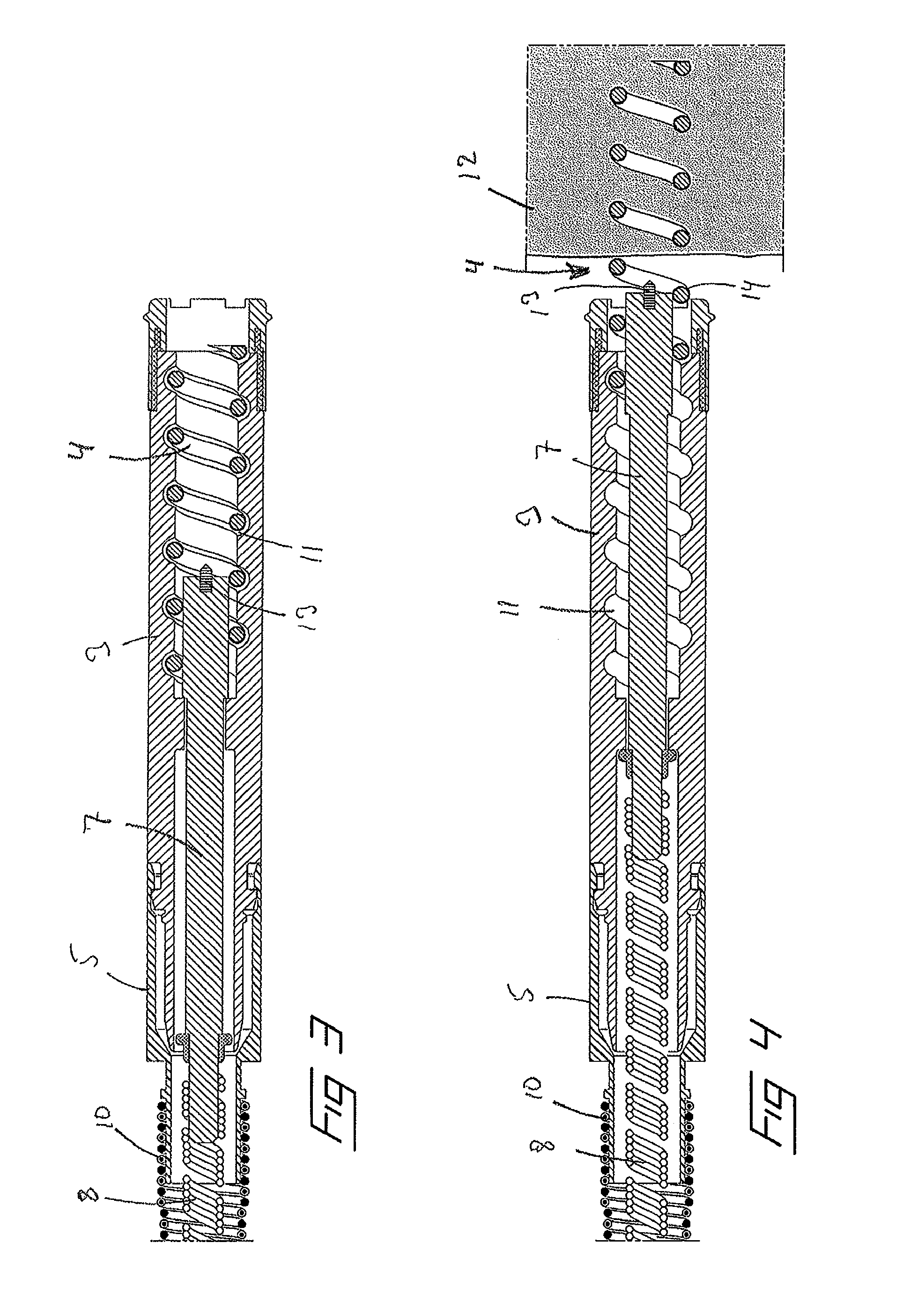Medical implanatble lead with fixation detection
a technology of fixation and implanatble leads, which is applied in the field of medical implanatble leads with fixation detection, can solve the problems of poor helix fixation, difficult to verify the performance of the attachment, and no good way to verify whether a helix is properly secured to the tissue, so as to prevent too deep penetration into the tissue
- Summary
- Abstract
- Description
- Claims
- Application Information
AI Technical Summary
Benefits of technology
Problems solved by technology
Method used
Image
Examples
first embodiment
[0031]Next, reference is made to FIGS. 3-6, in which is illustrated the invention in longitudinal sections, in FIGS. 3-5, through the distal end of the lead and in a perspective view in FIG. 6. As is commonly known in the art, the helix 4 is attached to an electrically conducting shaft 7, which is rotatable and displaceable within the header 3. In a proximal end, the shaft 7 is connected to a torque transferring member, which in the illustrated embodiment also function as conductor since it is formed as a wire coil 8 composed of at least one electrically conducting wire and can be rotated by rotating a control pin 9 (FIG. 1) in the proximal end of the lead. The wire coil 8 connects the helix to the first connector 6 on the control pin 9. In addition to the inner wire coil 8, the lead also comprises a second, outer wire coil 10, which connects the indifferent electrode 5 to the second connector 6′. The helix is journalled in a helicoidal groove 11 on the inside of the header. Accordi...
second embodiment
[0033]In FIG. 7 is disclosed the invention which is similar to the embodiment according to FIGS. 3-6. However, in this embodiment the shaft 7 is not provided with a pin. Instead the distal end of the shaft is formed with a planar contact surface 15 which, when the helix is correct mounted, will abut against and make electric contact with the surface of the tissue, which is detectable by means of an electric measuring device. As in the embodiment according to FIGS. 3-6, the helix is coated by an electrically insulating layer 14 of a biologically dissolvable material.
[0034]FIG. 8 illustrates a third embodiment by which the shaft is not provided with an auxiliary contact surface, like the pin and the planar contact surface of the first and second embodiments according to FIGS. 3-6 and 7, respectively. Like these embodiments, the helix 4 is coated with an electrically insulating layer 14 of a biologically dissolvable material. However, in this embodiment only a distal portion of the hel...
fourth embodiment
[0035]the invention is illustrated in FIG. 9. Here, the helix has no electrically insulating layer of a biologically dissolvable material, as in the previous embodiments. Instead, the shaft 7 is provided with a pin 13 in its distal end which is electrically insulated from the shaft. A separate insulated conductor 17 is arranged in a central passage in the longitudinal direction of the shaft between the pin and an electrically controlled switch 18 in the proximal end of the haft. The switch 18 can for example be arranged as any of the switches in U.S. Pat. No. 5,423,873 or US 2008 / 0294218. By arranging a switch of this kind it is possible to have one conductor, the inner wire coil 8 between the proximal end of the lead and the switch, and by control signals control the switch to connect either to the pin 13 or to the helix 4. By switching to the pin during implantation it is possible to measure if the lead is correctly mounted, in which case there will be an electric contact between ...
PUM
 Login to View More
Login to View More Abstract
Description
Claims
Application Information
 Login to View More
Login to View More - R&D
- Intellectual Property
- Life Sciences
- Materials
- Tech Scout
- Unparalleled Data Quality
- Higher Quality Content
- 60% Fewer Hallucinations
Browse by: Latest US Patents, China's latest patents, Technical Efficacy Thesaurus, Application Domain, Technology Topic, Popular Technical Reports.
© 2025 PatSnap. All rights reserved.Legal|Privacy policy|Modern Slavery Act Transparency Statement|Sitemap|About US| Contact US: help@patsnap.com



